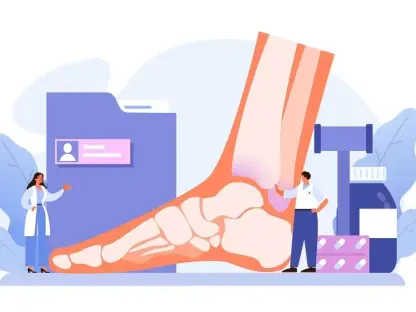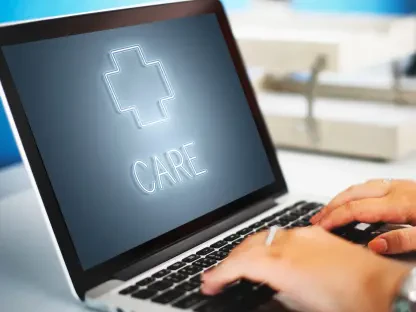Imagine a person stepping out of prison after years behind bars, only to face a staggering 129-fold increased risk of overdose death within the first two weeks of release, highlighting a dire public health crisis for recently incarcerated individuals, particularly those battling opioid use disorder. For many, the transition from confinement to community life is fraught with barriers—lack of healthcare access, social stigma, and fractured support systems. Yet, amidst these challenges, telemedicine has emerged as a transformative solution, offering immediate, life-saving interventions through programs like rapid-access telebridge models. This industry report delves into how telemedicine is revolutionizing addiction recovery for ex-inmates, bridging critical gaps in care and reshaping post-release health outcomes.
Understanding Telemedicine in Addiction Recovery
Telemedicine has become a cornerstone in addressing addiction recovery, particularly for ex-inmates who often face unique obstacles in accessing traditional healthcare. By leveraging virtual platforms, this approach enables remote consultations and prescriptions, ensuring that individuals can connect with providers without the delays or logistical hurdles of in-person visits. For a population at extreme risk of relapse and overdose immediately after release, telemedicine offers a critical lifeline, delivering timely interventions such as medications for opioid use disorder (MOUD) that can drastically reduce mortality rates.
The broader healthcare landscape has seen a significant uptick in telemedicine adoption, a trend accelerated by the COVID-19 pandemic and sustained by ongoing policy shifts. What began as a necessity during global health disruptions has evolved into a permanent fixture for reaching vulnerable groups, including justice-involved individuals. The ability to bypass geographic and systemic barriers makes telemedicine a powerful tool in addressing disparities, especially for those navigating the complex reentry process with limited resources or support.
Key segments of this industry include rapid-access programs like the telebridge model, which prioritize same-day MOUD prescriptions, as well as major technological platforms facilitating virtual care. Leading initiatives, such as the RIvER Clinic in Pittsburgh, exemplify how clinics can integrate telemedicine with multidisciplinary support to serve ex-inmates effectively. Additionally, influential regulations, including temporary DEA waivers allowing the prescription of controlled substances like buprenorphine via telemedicine, have expanded access, setting a precedent for innovative care delivery in addiction treatment.
Trends and Growth in Telemedicine for Addiction Treatment
Emerging Trends and Technological Advancements
The telemedicine sector for addiction recovery is witnessing dynamic shifts, driven by innovations that cater to the urgent needs of ex-inmates. One prominent trend is the rise of same-day prescription capabilities, which ensure that individuals in crisis receive MOUD without delay, a crucial factor given the high risk of overdose post-release. Integration with multidisciplinary care models further enhances outcomes, combining medical treatment with social services to address the holistic needs of this population.
Technological advancements are also shaping the landscape, with mobile health apps and virtual care platforms gaining traction as accessible tools for ongoing support. Consumer acceptance of telehealth continues to grow, fueled by the demand for discreet and immediate care, while market drivers like the opioid crisis and elevated health risks after incarceration underscore the urgency of scalable solutions. These developments open new opportunities to expand outreach, ensuring that justice-involved individuals can connect with providers regardless of location or socioeconomic constraints.
Looking ahead, the scalability of telemedicine presents a chance to replicate successful models in underserved regions, tailoring interventions to local needs. By harnessing technology to deliver care directly to those most at risk, the industry can redefine how addiction treatment is provided, making it more inclusive and responsive to the challenges faced by ex-inmates during their critical transition period.
Market Data and Future Projections
Data on telemedicine adoption in addiction treatment reveals promising engagement, with studies showing that programs like the RIvER Clinic achieve a 91.6% rate of same-day MOUD prescriptions through telebridge visits. Such statistics highlight the effectiveness of virtual interventions in meeting immediate needs, fostering treatment retention, and reducing barriers that often deter individuals from seeking help. These metrics reflect a growing reliance on telemedicine as a primary access point for care.
Projections for telehealth services in addiction recovery indicate robust growth, supported by increased funding and favorable policy changes post-COVID-19. From 2025 to 2027, industry analysts anticipate a surge in investment, driven by recognition of telemedicine’s role in curbing overdose mortality and emergency department utilization. This financial backing, coupled with legislative support, positions the sector for significant expansion, particularly in addressing post-release care gaps.
A forward-looking perspective suggests that telemedicine could fundamentally transform post-incarceration health services, with performance indicators showing reduced emergency visits and lower overdose deaths as key outcomes. As more regions adopt these models, the potential to standardize rapid-access care nationwide becomes tangible, offering a blueprint for sustainable, equitable addiction treatment for vulnerable populations.
Challenges in Implementing Telemedicine for Ex-Inmates
Despite its promise, telemedicine faces substantial hurdles in serving ex-inmates with addiction recovery needs. Technological access remains a primary barrier, as many individuals lack smartphones or reliable internet, limiting their ability to engage with virtual platforms. Additionally, stigma surrounding addiction and incarceration can deter participation, while privacy concerns about data security in telehealth interactions further complicate adoption.
Systemic issues add to the challenge, with a significant portion of ex-inmates uninsured and unable to afford prescription medications or ongoing care. Funding limitations often restrict coverage for essential treatments, and logistical difficulties in transitioning from telebridge programs to in-person follow-ups can disrupt continuity. These obstacles highlight the need for tailored solutions to ensure that telemedicine reaches those who need it most without exacerbating existing inequities.
Potential remedies include forging public-private partnerships to enhance technological infrastructure and expand access. Increased funding for uninsured patients, alongside policy advocacy for permanent regulatory changes, could address financial and legal barriers. By aligning resources with community needs, stakeholders can mitigate these challenges, paving the way for more effective integration of telemedicine into post-release care systems.
Regulatory Landscape Impacting Telemedicine in Addiction Care
The regulatory framework governing telemedicine in addiction treatment plays a pivotal role in its implementation, particularly for ex-inmates. DEA policies, including temporary waivers introduced during the COVID-19 pandemic, have allowed providers to prescribe MOUD like buprenorphine without an initial in-person visit, significantly broadening access. These waivers have proven instrumental in enabling rapid-response programs for high-risk populations.
Compliance requirements and data security measures for virtual platforms also shape how telemedicine programs are rolled out. Ensuring patient confidentiality and adhering to stringent guidelines are essential for maintaining trust, especially among a demographic wary of surveillance due to their justice involvement. These standards, while necessary, can pose logistical challenges for clinics striving to balance accessibility with regulatory demands.
Looking to the future, the potential for permanent policy shifts offers hope for sustained telemedicine access. Local health services play a critical role in funding initiatives like the RIvER Clinic, demonstrating how regional support can bolster innovative care models. Advocacy for enduring legislative changes will be key to embedding telemedicine as a standard practice in addiction recovery, ensuring long-term impact for ex-inmates.
Future Directions for Telemedicine in Post-Incarceration Recovery
The trajectory of telemedicine in addiction recovery for ex-inmates points toward exciting innovations that could further enhance care delivery. AI-driven treatment plans, for instance, hold potential to personalize interventions based on individual risk profiles, optimizing outcomes. Broader integration with community services, such as housing and employment support, could also create a more seamless reentry experience, addressing social determinants alongside medical needs.
Market disruptors like telehealth equity initiatives aim to tackle socioeconomic barriers, ensuring that technology access does not remain a limiting factor. Consumer preferences for discreet, immediate care are likely to drive demand, while global health trends and economic conditions will influence funding and scalability. These dynamics suggest a future where telemedicine becomes an integral part of post-release support, reshaping how recovery is approached.
Growth areas include replicating rapid-access models in diverse regions and enhancing peer support through virtual platforms. By building on successful case studies and adapting to local contexts, the industry can expand its reach, offering ex-inmates consistent, compassionate care. As these strategies evolve, telemedicine stands poised to redefine the landscape of addiction recovery, prioritizing accessibility and equity.
Conclusion and Recommendations for Telemedicine Expansion
Reflecting on the insights gathered, it is clear that telemedicine has demonstrated substantial value in enhancing treatment engagement for ex-inmates. The reduction in emergency department visits and the notably low overdose mortality rates underscore its impact, as evidenced by pioneering programs that bridge critical care gaps. These outcomes paint a picture of a tool with immense potential to save lives during the vulnerable post-release period.
Moving forward, stakeholders are encouraged to prioritize actionable steps to solidify telemedicine’s role in addiction recovery. Policymakers should push for sustained regulatory support, ensuring that temporary waivers become permanent fixtures to facilitate MOUD access. Healthcare providers and community organizations need to collaborate on securing increased funding for uninsured patients, addressing financial barriers head-on. Additionally, expanding rapid-access telebridge programs to more regions offers a practical path to scale impact, ensuring that no ex-inmate is left without timely care. These steps, if pursued with urgency, promise to build a more resilient framework for post-incarceration health, turning a crisis point into an opportunity for recovery and renewal.









